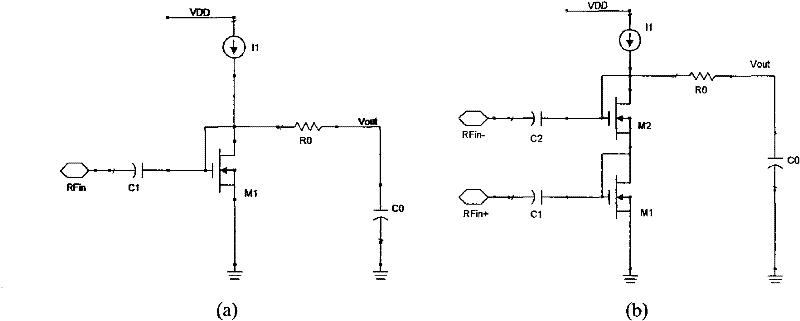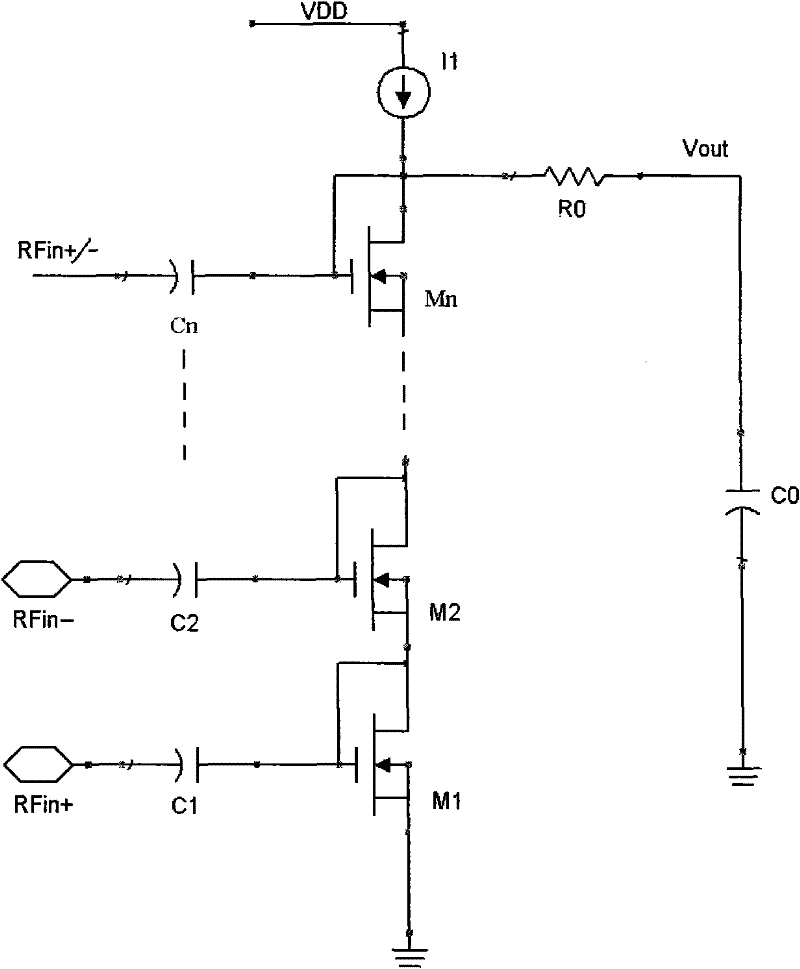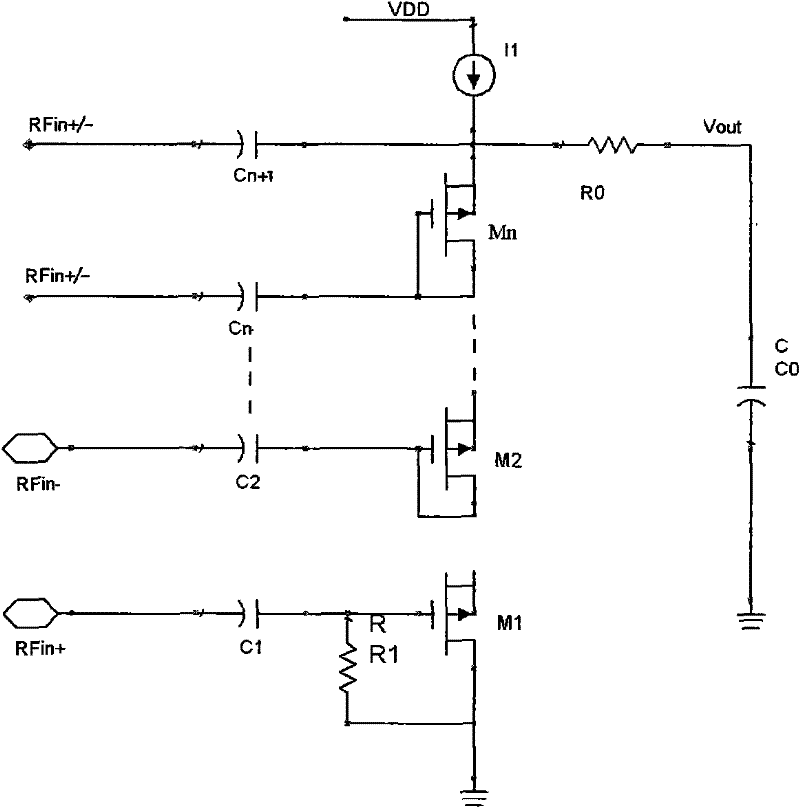CMOS difference radio-frequency signal amplitude detection circuit
A radio frequency signal, amplitude detection technology, applied in the direction of logic circuit, measurement of electrical variables, noise figure or signal-to-noise ratio measurement, etc., can solve problems such as limitations, achieve high amplitude detection gain, easy mass production and debugging, reduce Q The effect of value requirements
- Summary
- Abstract
- Description
- Claims
- Application Information
AI Technical Summary
Problems solved by technology
Method used
Image
Examples
Embodiment Construction
[0017] Below in conjunction with accompanying drawing and embodiment the present invention will be described in further detail:
[0018] Such as figure 1 As shown in (a), the MOS transistor M1 is biased by the current source I1, and the RF signal of Rfin is single-ended input through C1. The filter resistor R0 and the capacitor C0 filter out the radio frequency signal to obtain a DC component Vout. When M1 works in the strong inversion state, the relationship between the current and the voltage is a square ratio, which is formula (1):
[0019] I1=K*(Vin*sin(wt)+Vout-Vth) 2 (1)
[0020] Since I1 is constant, the relationship between the change of ΔVout and the amplitude Vin of the RF signal of Rfin can be obtained as formula (2):
[0021] ΔVout=Vin 2 / [4*(Vout-Vth)] (2)
[0022] When M1 works in the weak inversion state, the current and voltage have an exponential relationship, which is formula (3):
[0023] I1=I0*exp{[Vin*sin(wt)+Vout-Vth]*q / nKT} (3)
[002...
PUM
 Login to View More
Login to View More Abstract
Description
Claims
Application Information
 Login to View More
Login to View More - R&D
- Intellectual Property
- Life Sciences
- Materials
- Tech Scout
- Unparalleled Data Quality
- Higher Quality Content
- 60% Fewer Hallucinations
Browse by: Latest US Patents, China's latest patents, Technical Efficacy Thesaurus, Application Domain, Technology Topic, Popular Technical Reports.
© 2025 PatSnap. All rights reserved.Legal|Privacy policy|Modern Slavery Act Transparency Statement|Sitemap|About US| Contact US: help@patsnap.com



